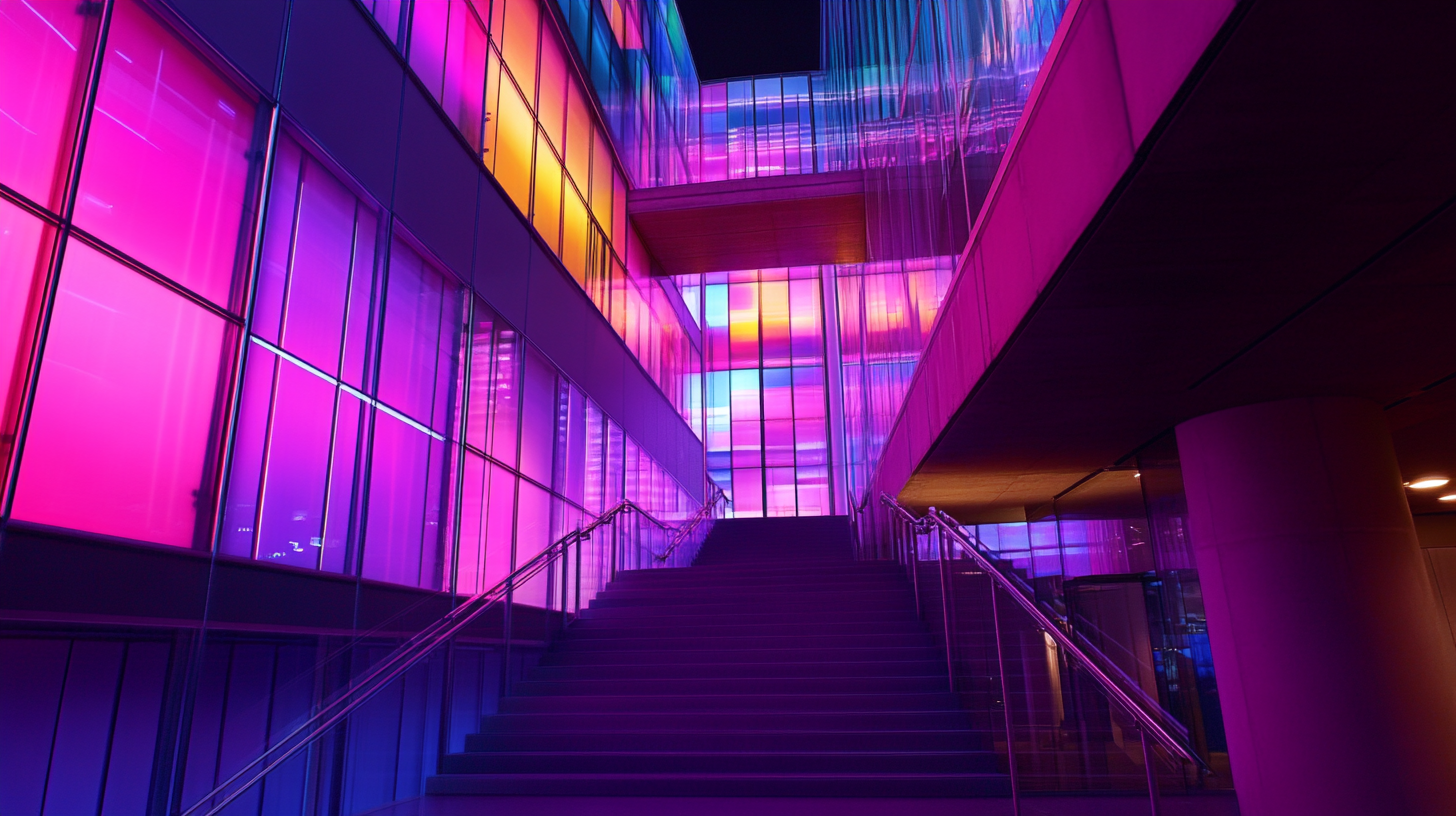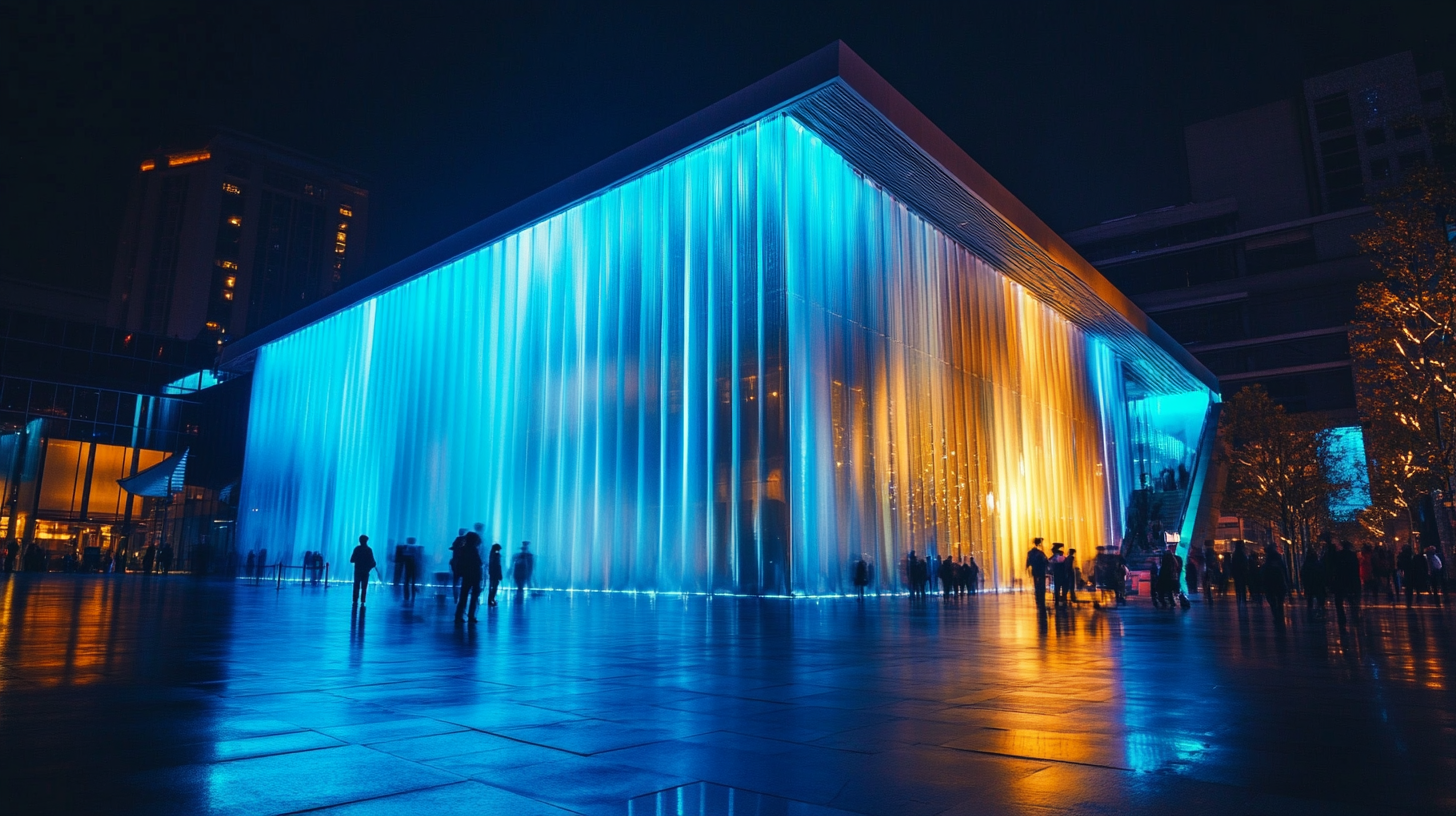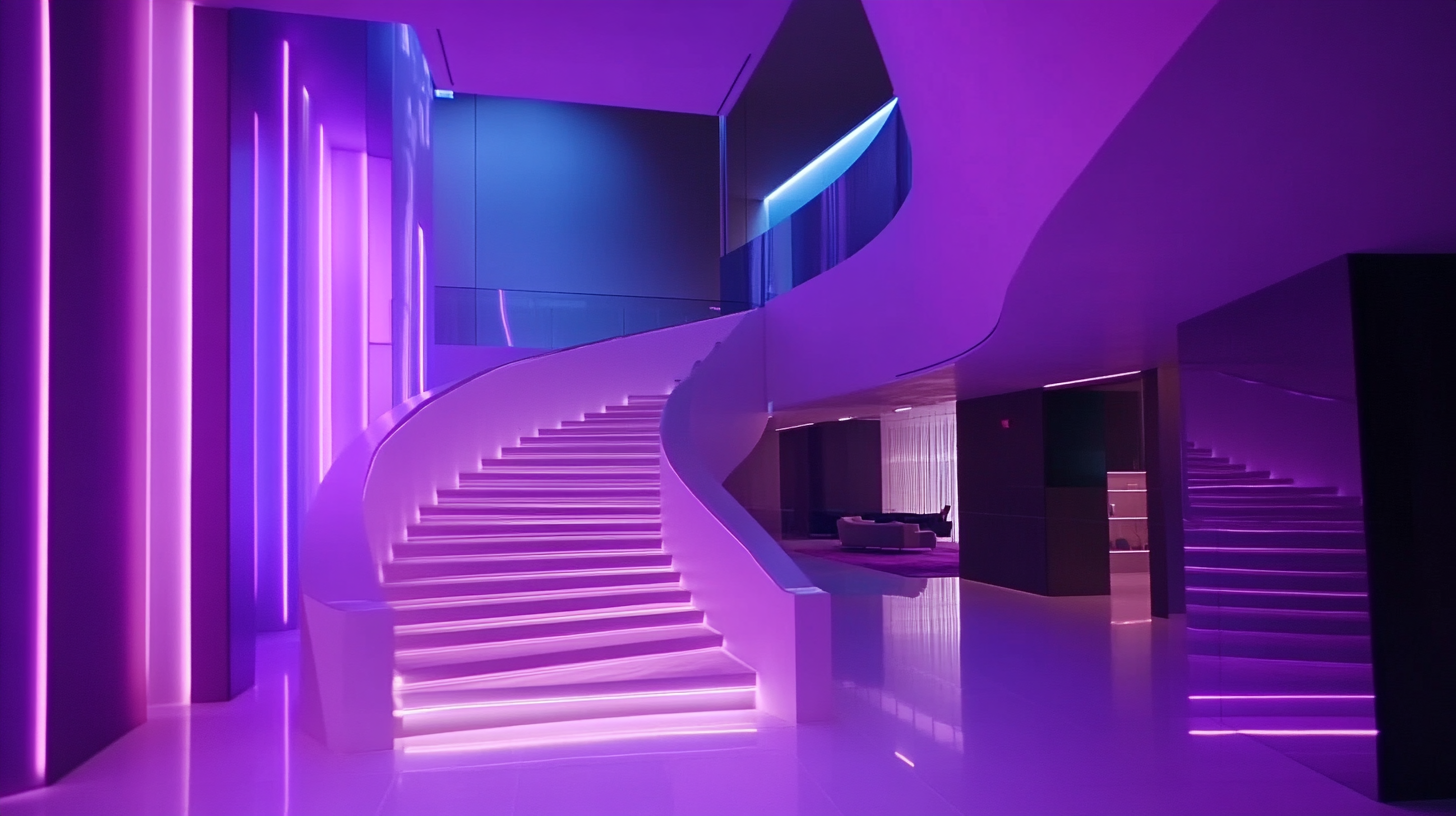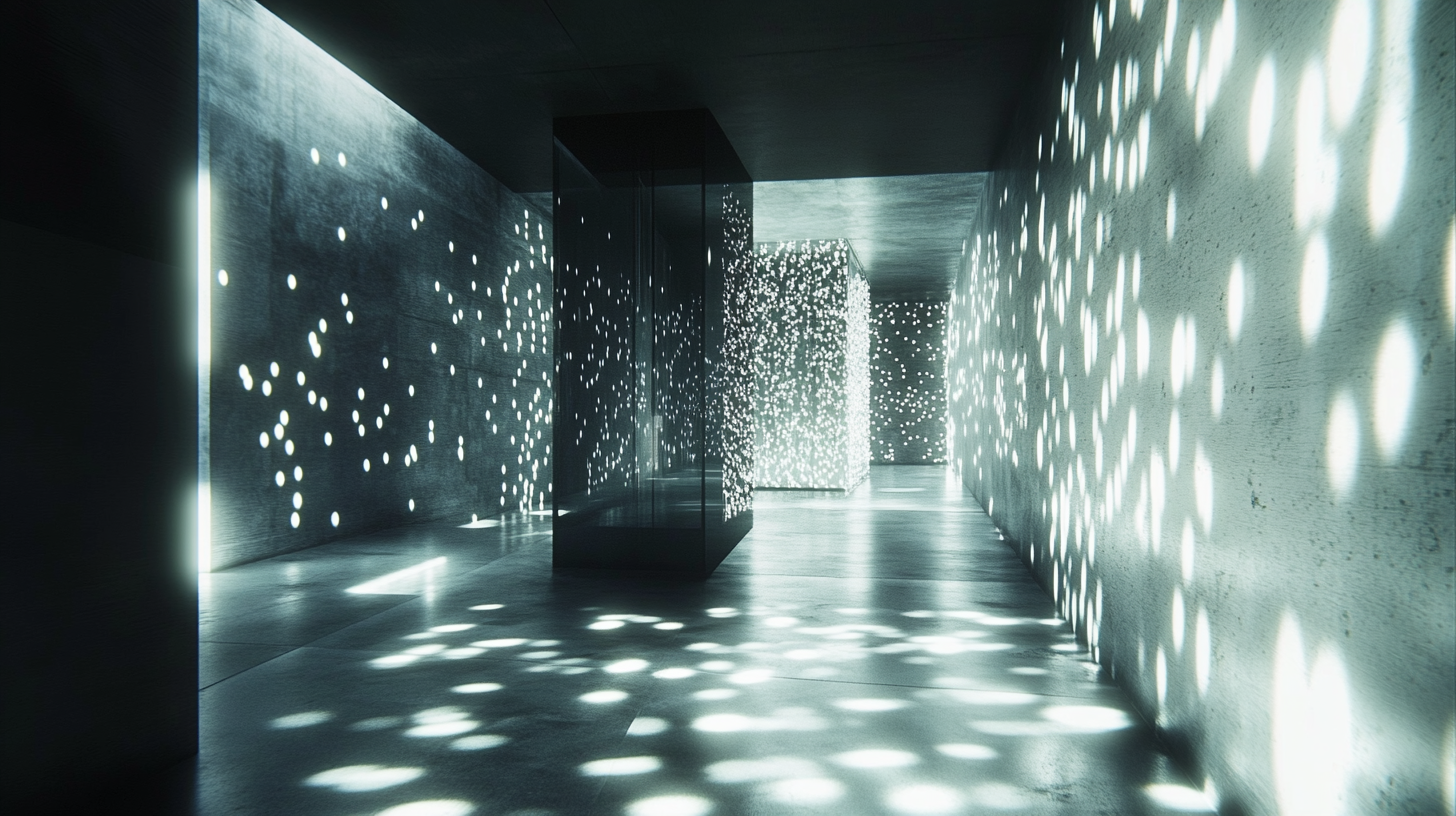Transforming Spaces: Innovative Applications of House Lighting in Modern Architecture
In the realm of modern architecture, the role of house lighting has evolved significantly, transforming not just the aesthetic appeal of residential spaces but also their functionality and energy efficiency. According to a report by the International Energy Agency, buildings account for nearly 40% of global energy consumption, with lighting being a substantial part of this figure. As architects and designers increasingly integrate innovative lighting solutions, they are able to create environments that enhance well-being, boost productivity, and provide a sense of place. The shift towards smart lighting systems—capable of adapting to the needs of occupants and environmental conditions—marks a crucial step in the sustainable design movement.
Furthermore, recent studies indicate that strategically designed house lighting can influence mood and behavior, optimizing how spaces are experienced. For instance, the Lighting Research Center found that well-lit environments can improve creativity and concentration by up to 30%. As the intersection of technology and design continues to evolve, modern architects harness the power of house lighting not just for illumination, but as a dynamic tool to shape the lived experience within residential environments. This blog explores the innovative applications of house lighting, illustrating its pivotal role in redefining modern architecture.

Innovative Trends in House Lighting: A Shift Towards Sustainable Solutions
In the realm of modern architecture, innovative trends in house lighting have emerged as a crucial aspect of creating sustainable living environments. As the world shifts towards eco-friendly solutions, lighting designs are not only focused on aesthetics but also on efficiency and sustainability. The adoption of LED technology has revolutionized house lighting, offering energy-efficient options that consume significantly less power than traditional incandescent bulbs. This transition not only reduces energy bills but also minimizes the overall carbon footprint of residential buildings. Furthermore, the integration of smart home systems has enhanced the functionality of house lighting. Homeowners can control their lighting remotely, set schedules, and even adjust the intensity based on the time of day or their mood. This intelligent approach not only contributes to energy savings but also fosters a personalized living experience. For instance, adaptive lighting adjusts to natural light levels, ensuring that homes are optimally lit throughout the day without excessive energy use. The growing emphasis on sustainable solutions in house lighting is also reflected in the materials and designs used. Manufacturers are increasingly exploring recycled materials and eco-friendly production methods. This trend not only caters to environmentally conscious consumers but also aligns with broader architectural practices aiming to create sustainable urban spaces. As we continue to innovate in house lighting, the integration of functionality, sustainability, and technology will play a pivotal role in shaping the future of modern architecture.

Integrating Smart Technology: Enhancing Home Lighting with Automation
In the realm of modern architecture, smart technology is redefining how we approach home lighting. With the proliferation of automation, homeowners now experience a level of convenience that was once unimaginable. Automated lighting systems can be seamlessly integrated with various smart devices, allowing for effortless control over ambient light levels and color temperatures. Imagine coming home to a space that adjusts to your mood, with lighting that simulates natural daylight or sets a cozy evening atmosphere at the touch of a button.
This transformation goes beyond mere aesthetics; it enhances overall energy efficiency. Smart lighting systems can optimize energy use by adapting to occupancy patterns, ensuring that lights are only on when needed. This innovative approach aligns with the broader trend of digital upgrades across industries, where intelligent systems are increasingly becoming the norm. The integration of such technologies not only elevates our living spaces but also contributes to a sustainable future, making environmentally friendly choices more attainable for everyday life.
Furthermore, as we delve into the future of smart home technology, the focus remains on user-centered design. The evolution of voice control and IoT connectivity allows residents to craft personalized experiences at home, making automation an integral part of daily routines. The vision of a fully automated home—where systems communicate harmoniously to create the ideal environment—promises not just luxury but a reimagined way of living that values comfort while embracing technological advancement.

The Role of Natural Light: Maximizing Daylight for Energy Efficiency
In the realm of modern architecture, the strategic use of natural light has become a paramount consideration, especially as society increasingly prioritizes energy efficiency. By maximizing daylight, architects can significantly reduce reliance on artificial lighting, leading to reduced energy consumption and enhanced sustainability. For instance, recent innovations in building design, such as the implementation of transparent solar panels, allow buildings to harness sunlight while maintaining aesthetic appeal. This not only contributes to lower energy bills but also aligns with global sustainability goals.
Furthermore, the incorporation of natural light has demonstrable positive effects on occupant well-being, particularly in educational settings. Studies suggest that schools prioritizing daylight in their designs create healthier, more stimulating environments that can enhance student performance. In essence, maximizing natural light does not merely serve environmental purposes; it fosters better learning conditions.
As demonstrated by advancements in low-carbon technologies, such as solar-powered streetlights and energy-efficient buildings, the emphasis on natural light can serve dual roles—promoting sustainability while enhancing the quality of human experiences within those spaces. This synergy between architecture and energy efficiency exemplifies the transformative potential of natural light in contemporary design strategies.

Mood and Functionality: Designing Spaces with Adaptive Lighting Solutions
In modern architecture, the integration of adaptive lighting solutions plays a crucial role in enhancing mood and functionality within spaces. Advanced home lighting systems, such as the Euribot intelligent spotlight-less lighting, illustrate how innovative technology can transform a home into a dynamic environment. According to a report by the American Society of Interior Designers, 67% of interior designers believe that lighting significantly impacts the overall aesthetics and functionality of a space. This statistic highlights the importance of thoughtful lighting design in contemporary spaces.
Adaptive lighting solutions cater to the evolving needs of residents, providing flexibility and responsiveness to varying activities throughout the day. For instance, warm light can create a cozy atmosphere in the evening, while cooler tones foster concentration during work hours. A recent survey from the International Lighting Design Association indicates that 74% of homeowners are interested in smart lighting systems that allow for customizable experiences, aligning with the shifting expectations of modern living.
Euribot's innovative approach to lighting eliminates the need for traditional fixtures, using strategically placed smart controls and sensors. This not only maximizes the use of space but also minimizes visual clutter, allowing the architectural features of a home to take center stage. By harnessing advanced technology, these lighting systems enable a seamless interplay between design and functionality, transforming how residents interact with their living environments.
Case Studies: Successful Modern Architectural Projects Utilizing Unique Lighting Techniques
In modern architecture, innovative lighting techniques are playing a pivotal role in transforming spaces and enhancing the functionality and aesthetic appeal of buildings. Case studies from various architectural projects illustrate how unique lighting applications can elevate both the structure and the user experience. For instance, the integration of dynamic LED lighting not only highlights architectural details but also adapts to the changing needs of inhabitants throughout the day.
One notable example can be observed in public spaces designed with sustainability in mind, such as the C40 cities initiative, which focuses on improving air quality and public health. Lighting in these urban environments is carefully planned to ensure that it reduces energy consumption while maximizing visibility and safety. The implementation of smart lighting systems, which adjust their intensity based on the level of ambient light, showcases how innovative lighting design can promote health and well-being while supporting environmental goals.
Furthermore, the recent Tsinghua University Business Case Competition emphasizes the importance of adaptability in both health management and architectural design. Just as companies prioritize employee well-being through strategic health models, architects are increasingly considering the emotional and psychological impacts of lighting in their designs. By using localized and adaptive lighting strategies, they not only create visually stunning environments but also foster spaces that are conducive to productivity and relaxation, ultimately enhancing the quality of life for all users.
 Skip to content
Skip to content